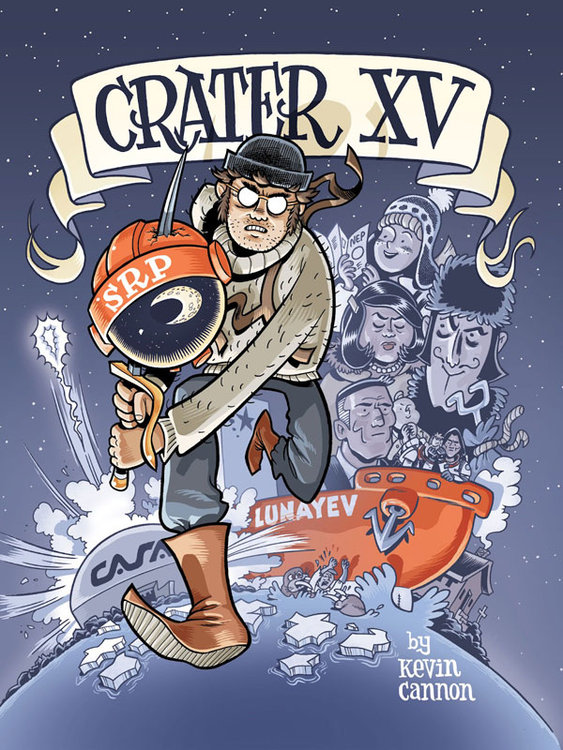
We’re talking about comics this week. I read enough of them, and it seemed like this trifecta of books made sense — there’s a loose “pulp adventure” theme that works, even as their tones vary wildly, from gritty procedurals to polar adventure. Some of that makes each of these notable, however, is the way that their tones shift within the same work. Body horror sits beside a sense of wonder; comedic barfights give way to grief. That these works can handle both is one reason why each comes highly recommended.
Kevin Cannon’s Crater XV is the sequel to his earlier Far Arden, about a hard-drinking Arctic explorer leading an expedition to seek a lost, paradise-like, island. Cannon’s style is incredibly fluid, and sometimes incorporates stage directions into the artwork; it’s a lot of fun to read. The story, too, found a good balance between adventure and comedy — right up until the ending, which pushed things in a very different direction. Crater XV picks up afterwards, with Cannon’s protagonist still reeling from the earlier book’s events. Slowly, he’s drawn into a crisis involving a Siberian boat in Canadian waters, a lost duo of space explorers, and a woman who may be his lost childhood sweetheart. Cannon’s energetic style remains a joy to read, and the book as a whole is both thrilling and genuinely moving in places.
Fates Worse Than Death, the first collection of Eric Stephenson & Nate Bellegarde’s Nowhere Men, takes a more collage-like approach to the story it’s telling; occasionally, the story is interrupted by news clippings, advertisements, and other minutiae that evoke the world in which this is set. The short version: a few decades ago, a quartet of scientists decided to change the world, becoming de facto rock stars, and leading to a re-imagined version of today. In the present, a group of scientists on a space station is altered by a virus (there’s a bit of a Fantastic Four riff going on, yes), and catastrophe ensues. Given that this is the first chapter in a longer work, I’m curious to see where the series goes from here, but I’m encouraged by what I’ve read so far.
I also enjoyed David Hine and Doug Braithwaite’s Storm Dogs, which begins in the future, as a group of investigators are sent to an archetypally distant planet to uncover the truth about a series of killings. What emerges is a grim, murky, factionalized narrative, with contesting factions, sinister aliens, and more than a few unsettlingly visceral moments. Hine’s script is occasionally deeply precise with his influences: characters appear with the surnames Bukowski, Bronson, and Burroughs. (Though in this case, either William or Edgar Rice would be an appropriate source — maybe both.) Much like the first Nowhere Men collection, this is the first “season” of a larger work; between the precisely-drawn characters and the ambiguities that Hine reveals, I’m curious to see where the series goes from here.
Follow Vol. 1 Brooklyn on Twitter, Facebook, Google +, our Tumblr, and sign up for our mailing list.
